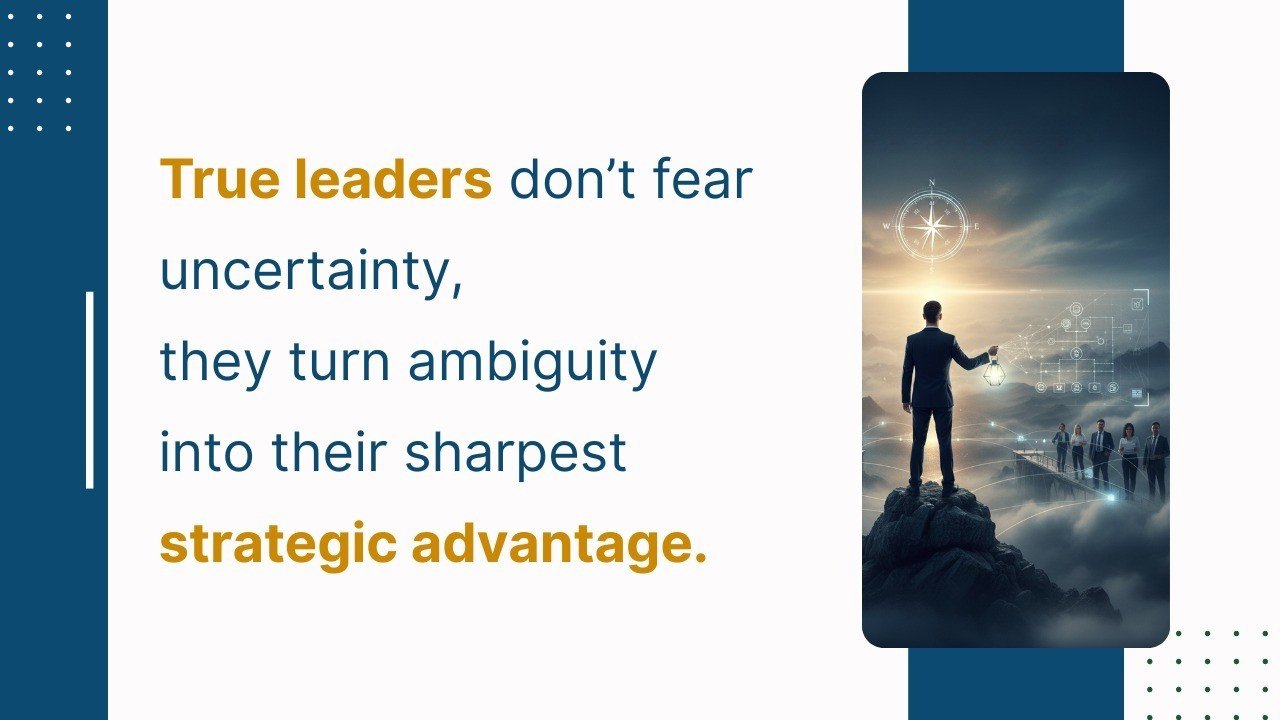
In business today, volatility isn’t a season rather, it’s the climate. Markets shift, customer expectations evolve overnight, and technologies disrupt faster than adoption cycles can catch up.
I learned this early in my career. A project may look “certain” on paper, budgets locked, milestones clear, risks mapped, but it can quickly unravel when a regulatory change lands mid-way. What can help move forward in such a situation is not more data or waiting for clarity. It is the willingness to act decisively with partial information, course-correct quickly, and keep the team aligned.
Uncertainty feels threatening because it exposes gaps in control. But for leaders who can reframe it, ambiguity becomes an opportunity to differentiate. The organizations that thrive are those that build muscles of adaptability, not just processes of efficiency.
Here are three shifts that help turn uncertainty into a strategic advantage:
1. Trade Certainty for Clarity
Leaders often chase certainty, predictable outcomes, fixed answers, and a straight line from plan to result. But certainty is rare, and waiting for it is costly.
What teams need more than “definite answers” is clarity on direction and boundaries. Clarity doesn’t mean knowing everything; it means naming what we do know, what assumptions we are betting on, and what could shift.
When leaders frame ambiguity this way, teams stop freezing in the unknown. They build confidence to act, adapt, and keep moving without mistaking uncertainty for chaos.
Here’s the reflection worth considering: in moments of uncertainty, are you buying time waiting for answers, or are you creating clarity so your team can act?
2. Build Adaptive Decision-Making
Traditional strategy is about locking in a plan. Adaptive leadership treats strategy as a living system. This means:
- Small bets: Break big moves into smaller, testable actions. Learn fast, scale what works, drop what doesn’t.
- Feedback loops: Set up ways to sense shifts early—customer behaviour, competitor moves, internal signals.
- Reversibility lens: Before deciding, ask: If this is wrong, how easy is it to reverse?
This doesn’t mean indecision. It means structuring decisions in ways that give you room to adjust, without losing momentum.
3. Lead with Steady Transparency
In uncertain times, teams don’t expect leaders to have all the answers. They notice how leaders think and behave under ambiguity. Honesty, composure, and a clear sense of purpose act as stabilisers.
Saying, “Here’s what we know, here’s what we don’t, and here’s how we’ll move forward anyway” does more than communicate facts. It models decision-making under uncertainty. It signals that it’s okay to experiment, adjust, and take ownership.
Transparency builds operational courage. Teams mirror it: asking the right questions, proposing solutions, and taking responsibility without waiting for permission. Leading through uncertainty is less about projecting confidence and more about creating conditions where the team can act decisively. That shared composure is what turns ambiguity from a risk into an advantage.
Why This Matters Now
As ambiguity isn’t a passing storm but is here to stay, supply chains will stay brittle, technologies will keep outpacing forecasts, and customer expectations will evolve faster than most org charts can handle. Clinging to certainty will leave us firefighting yesterday’s problems. So, leaning into the unknown is the way to unlock space for reinvention.
Ambiguity is not the enemy. It is the raw material of transformation. If ignored or mishandled, it can lead to hesitation, misalignment, or missed opportunities. But when approached with curiosity and courage, it becomes a spark for bold thinking and meaningful change.
Closing Thought
Leading through ambiguity doesn’t mean waiting for clarity to appear. It means creating clarity where none exists, making adaptive decisions, and modelling steady confidence. Done consistently, this doesn’t just help organizations survive disruption—it helps them grow through it.
The future won’t reward those who fear uncertainty. It will reward those who can turn it into a strategic advantage.
#LeadershipInAction #NavigatingUncertainty #AdaptiveLeadership #ClarityInChaos #FutureReady #BusinessResilience #TransformationMindset


